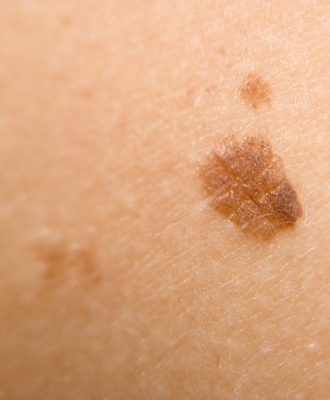
12 Sep The Curious Tale of Skin Cancer And The Cyclops
Basal Cell Carcinoma
Sometimes truth and everyday reality is stranger than fiction. Had someone told me that someday I would be discussing one-eyed cyclopean sheep and sonic hedgehogs with my skin cancer patients, I would have laughed. But alas! Dermatologists are now sharing the bizarre tale of these creatures with patients diagnosed with complicated forms of a common skin cancer called Basal Cell Carcinoma.

Basal cell carcinoma (BCC) is the most common skin cancer and indeed the most common cancer overall in all of mankind.
Basal cell carcinoma (BCC) is the most common skin cancer and indeed the most common cancer overall in all of mankind. It is caused from excessive sunlight radiation to the DNA in your skin. There are over 2.8 million Americans alone diagnosed yearly. Every dermatologist probably sees multiple cases on a daily basis as it seems to almost have become a rite of passage for the Baby Boomer generation. Its incidence is rising worldwide, reflecting last century’s trend of increased sun seeking behavior. The median age is 68 at diagnosis but it is not uncommon to see patients with this cancer in their 20’s anymore. There is evidence that BCC’s have been with us a long time. They have been observed in 4,000 year old Egyptian mummies. In the 1800’s they were referred to as “Rodent Ulcers”, as they sometimes appear as a bloody growth evidently resembling the problem at the time of rats nibbling on people while they slept.
Basal Cell Carcinoma Tumors
While not usually deadly, tumors can grow to impressive sizes that warrant complex surgical repairs. Sometimes this results in permanent deformities and psychological distress to patients. The standard treatments for BCC’s range from surgery, radiation, topical chemotherapy, and various medical grade light devices.
Most BCC’s respond well to these treatments. It is not uncommon however to have someone walk into the office with a tumor they have been neglecting for years. Just like weeds in your yard, if you ignore a skin cancer it will spread. There are also individuals dealt an unlucky genetic hand who make multiple BCC’s from an early age and then throughout life. In these two scenarios conventional treatments are often not enough.
Medication For Basal Cell Carcinoma
Enter the cyclop sheep and the Sonic Hedgehog…
In 1957 the US Department of Agriculture started a decade long investigation into an alarming number of lambs born with one central eye in Idaho. It was discovered that their mothers had grazed on a particular corn lily at a critical juncture in their pregnancy. The chemical from the wild corn lily was coined cyclopamine, after the one-eyed Cyclops in mythology. It seems a strange coincidence to me that medical science would discover the secret of the Cyclops in the common sheep of all animals. If you recall the ancient tale of the Odyssey, you’ll remember it was a flock of sheep that allowed the heroes to escape the murderous Cyclops. This chemical, cyclopamine, discovered in the sheep has been found to cure basal cell cancers by regulating a thing call the “Sonic Hedgehog”.
The Sonic Hedgehog is a cellular pathway that plays a key role in normal embryologic development in all mammals, including you and me. When scientists first toyed with it, they found they could cause hedgehog-like spines to grow all over a fruit fly’s body—leading to the cutesy name of the Hedgehog Pathway. “Sonic the Hedgehog” was a popular video game character in the 1990’s and it was named in his honor. An abnormal Sonic Hedgehog pathway is appreciated in about 90% of BCC’s and it is the target for the cyclopean sheep drug.
This new medication is not for all comers though. The main side effects of severe muscle cramping and temporary total hair loss dissuade all but the most severely afflicted patients. The side effects on someone’s wallet can be even more drastic (the price is too obscene to even print). Still, it is a phenomenal option for some people not candidates for conventional treatments.
How Do You Know If You Have Basal Cell Carcinoma
So how do you know if you have a BCC? Sometimes these cancers manifest as a poorly healing wound. It may be a spot that bleeds with the slightest of provocation. They can also commonly appear pearly or translucent or even flat and scaly. The sneaky ones look just like a simple scar. The presentation is wide-ranging so you should point out any abnormal spots to your dermatologist, even if you judge them to be insignificant. And if you should have a spot that looks like a rat has gnawed on it, get in to see someone. And if you happen to run into any cyclop animals out there, you may have just found the next billion dollar drug!

